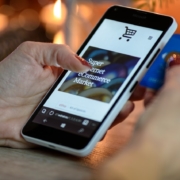Geo-targeting is where you reach an audience in a specific location of benefit to your business. In today’s society, it is a great tool for reaching a more qualified audience and getting more value from your budget. Here are the reasons why you should be geo-targeting and the best way to go about it.
Spend your money in the right places
You can literally target people within a specific radius of your business. If you own a clothing store, by targeting the people within a 20-mile radius of your store, for example, you are more likely to generate in-store sales. Google Ads allows you to add a location extension to your ads so people searching can get directions right to your store.
Best and Worst areas
Google Analytics gives you the data to monitor which are the best and worst performing location areas. You can use this data to target your budget in the places that will result in the best return on investment. You may find out you have an audience in an area that you previously would not have considered. As well as finding the best places, you can also choose to exclude areas that you think won’t result in conversions. If your physical location is in Whistler, then using ad budget showing ads to people in Toronto may not be the best move.
Greater overall engagement
If you target people in the right location, your ads will have better overall engagement as they will be more relevant to your audience. By geo-targeting Facebook ads, you can showcase your service or product to someone in their area as they are browsing social media. You can target the area around your actual physical address and promote a sale or offer that is happening at the time. Stand out from your competitors by showing people in the area why they should shop at your store rather than elsewhere in real-time.
Build Loyalty
Having a business in the community can be something you can really use to your advantage. You can post about the community which will make your audience more likely to engage with your business, show testimonials and highlight local things you are proud of. Creating an emotional connection to a local audience will mean good results for your business.
Geo-targeting has multiple benefits and allows you to reach an audience who will be more invested in your brand. At Cloud9 Marketing, our specialists can help you target the audience you want to reach. Contact us for more information.






